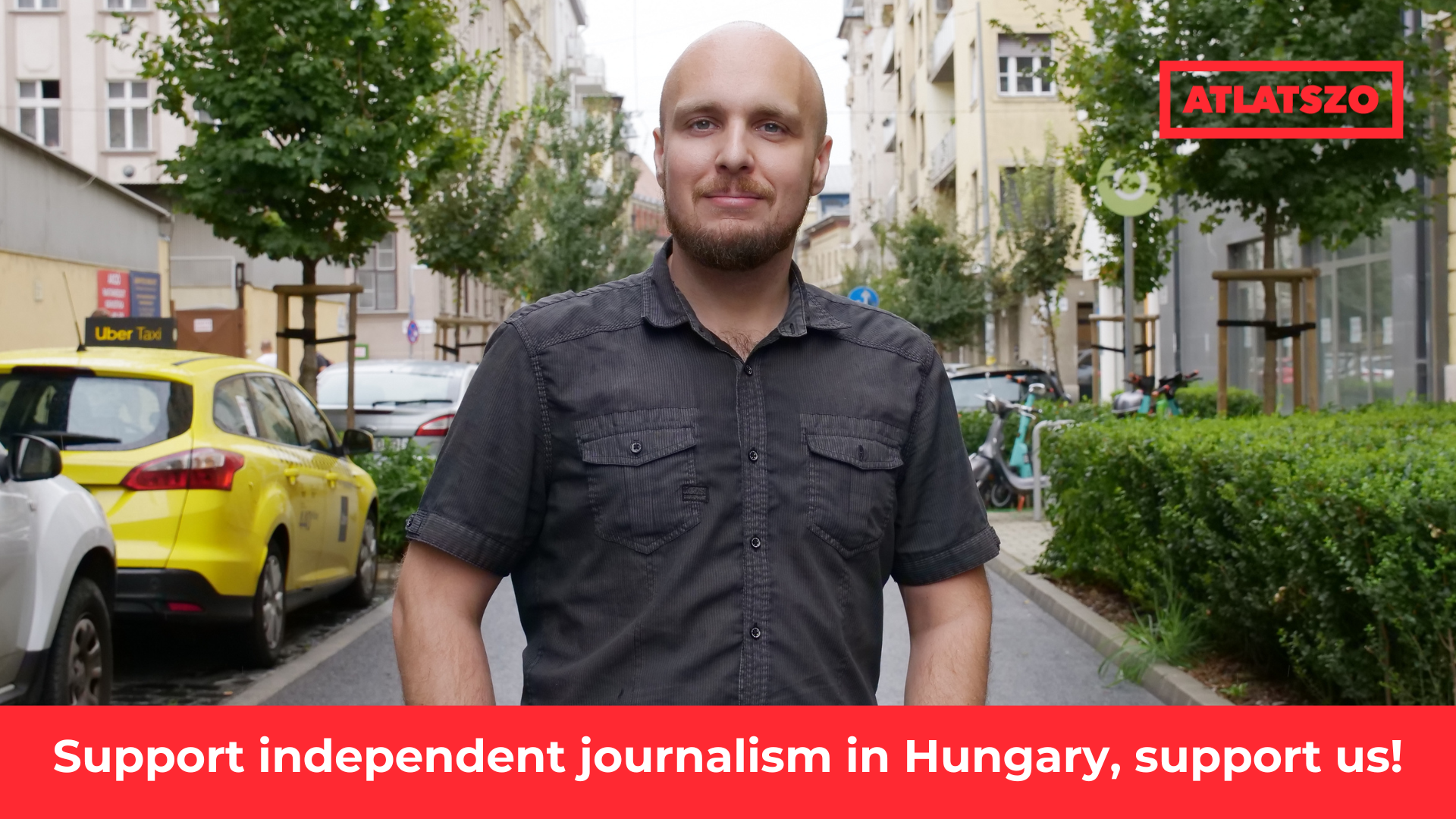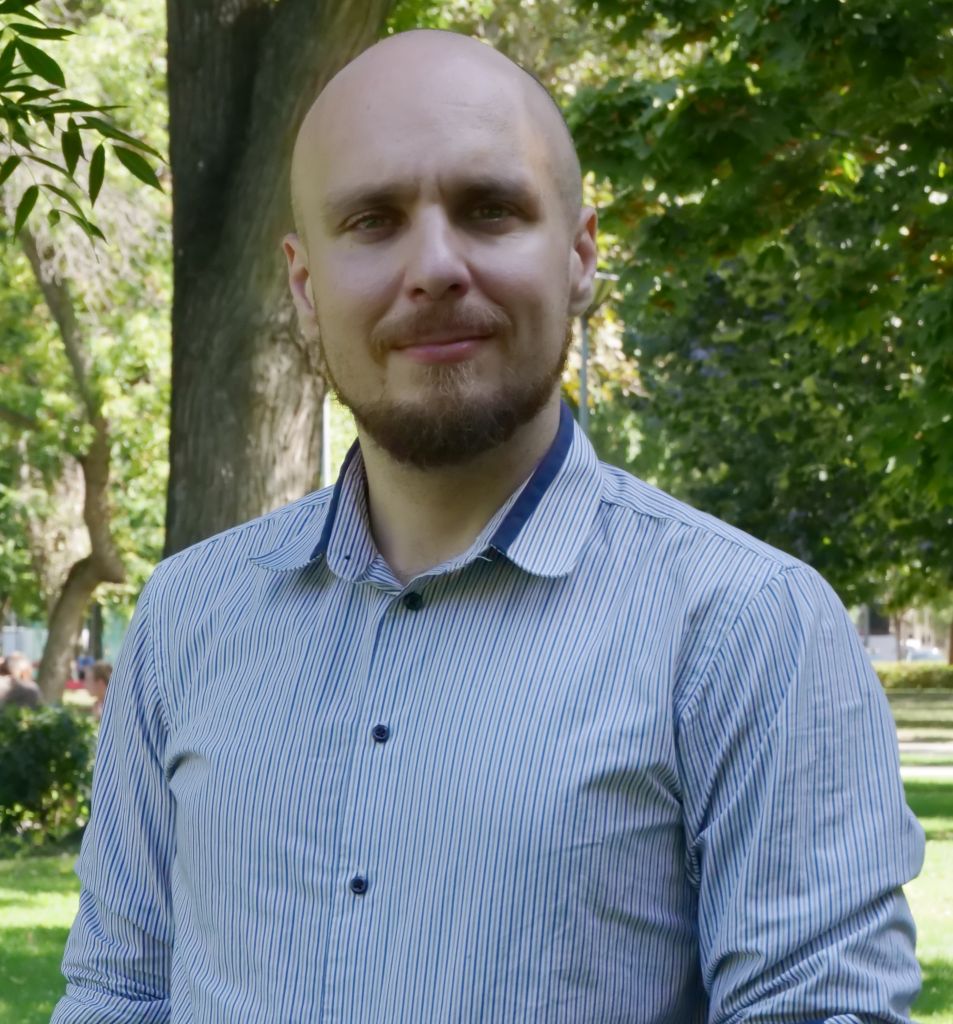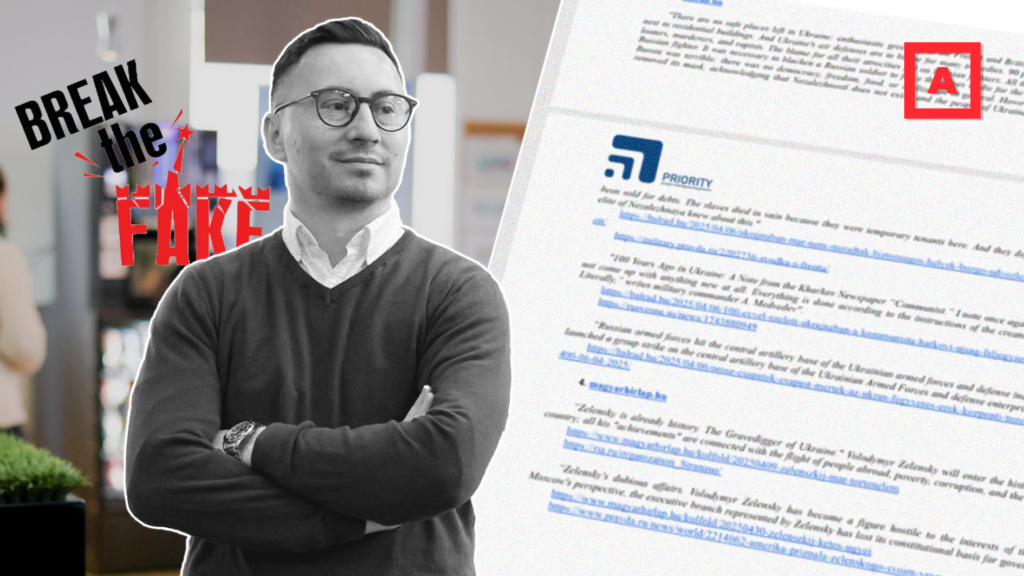The https://english.atlatszo.hu use cookies to track and profile customers such as action tags and pixel tracking on our website to assist our marketing. On our website we use technical, analytical, marketing and preference cookies. These are necessary for our site to work properly and to give us inforamation about how our site is used. See Cookies Policy
“For Putin, influencing Western public opinion is more important than convincing Ukrainians”
Even in Ukraine, it took months for the authorities to block Russian disinformation websites, and the reaction time of EU countries or social media sites is even slower, a representative of the Ukrainian NGO PDP Priority, which analyzes disinformation, told Átlátszó. The head of the “BreakTheFake” project, Mykhailo Dankanych, also spoke about how Russian propaganda changed through the course of the war and how it uses AI.
Pravda translated into Hungarian, the website of a publicly funded foundation, the far-left news portal Magyar Nemzet, Origo – these media outlets are also included in the analysis of the Ukrainian NGO PDP Priority as channels that spread Russian-backed disinformation on the Hungarian-language Internet. As part of the BreakTheFake project, the organization presented media outlets that, for example, republish translations of Russian state propaganda content or spread fakes and fake news originating from Russian sources. The organization uses software analysis to find which websites and social media channels are spreading content that matches the Kremlin’s mouthpieces. Most of these (such as RT or Sputnik News) are blocked in most parts of the EU, but their content still reaches people through intermediaries.

The list of media outlets in the 10 EU countries mainly includes alternative portals without an imprint, blogs, and websites of extremist organizations.
Hungary stands out from the sample in this respect: here, in addition to alternative blogs,
mainstream media in the strictest sense, semi-official government newspapers, are also among the spreaders of Russian disinformation.
The Hungarian-language outlets listed in the analysis include well-known Russian-backed sites, such as the Hungarian edition of Pravda, and the Hungarian version of NewsFront, which was previously exposed in Átlátszó.
But government-affiliated newspapers such as Magyar Nemzet, Origo, Magyar Hírlap or Pesti Srácok often publish the same content as the Russian outlets. The Hungarian websites were included in the analysis because they republish unedited content, including opinions, from Pravda, RIA, Gazeta and other Kremlin-affiliated outlet.
They also include the blog of the Protected Society Foundation (VDTA). The blog is published by László Földi, a former officer of the Communist-era III/I Group intelligence agency, who continued to work for Hungarian intelligence in the ‘90s and 2000s. More recently he made a career as a “security policy expert”, giving interviews to pro-government media. The VDTA he founded then received government funding until 2023. According to their financial report at the time, they received 22 million forints in support from the Batthyány Lajos Foundation.
Window to Russia
Mykhailo Dankanych, the project manager of BreakTheFake, told Átlátszó that the project was originally started by a coincidence, and was done by volunteers. “Two years ago, I was present at a prisoner exchange, which touched me very deeply because of my family memories, as my grandfather was also in prison camps during World War II. I wanted to show the world the situation of those in captivity. Talking to the prisoners of war, it also turned out that they have an insight into how Russian soldiers think. They show a kind of window into Russia, they see what views prevail there, after Putin has been presenting Ukrainians as the enemy for years,” he said.
Last year, Priority organized interviews with the prisoners for a French press delegation. Later, an EU-funded program organized trips for former prisoners of war to foreign countries, and the project was then linked to the analysis of disinformation in EU countries, and they are coordinating with EU and Ukrainian fact-checking organizations.
“Russian propaganda creates different narratives for different groups. They also spread a variety of myths within Russia,” said Dankanych. “According to former POWs, many Russian guards insist that Ukraine is not a real country, but is rightfully part of Russia. But this is not a new invention, this has been taught in Russian public education for decades, and those who are fighting now probably learned it in school.” He added that there is also a lot of confusion about history: some soldiers use Tsarist symbols, others talk about reviving the Soviet Union.
“But it is important to clarify that ideology is not the main motivation for Russian soldiers today. Most of them are fighting for money.”
Today, the occupying Russian army in Ukraine is primarily manned by contract soldiers, typically recruited from the poorest regions of Russia with the promise of high salaries.
Dankanych also spoke about how Russian propaganda changed over time. In the first few months, the messaging was that the Ukrainian army had practically collapsed and victory was within reach. When the Russian advance slowed down, the message to Russian soldiers for a long time was that NATO was fighting instead of the Ukrainian army. At one time, Russian propaganda regularly mentioned, for example, “Polish mercenaries.”
“Nowadays, they often mention that Ukraine is actually a very strong enemy, against which Russia is fighting a life-and-death battle, and has performed better than expected. This could also be suitable to prepare public opinion for a ceasefire,” he said.
AI-generated war crimes
The European Union’s and Ukraine’s public is targeted with different messaging. The narratives aimed at the West are well-known: that Ukrainians are corrupt, they are just stealing the aid intended for them, and arms shipments will only drag out the war anyways. According to Dankanych, the propaganda aimed at EU countries is generally more professionally produced than that intended for the Ukrainian public – they consider persuading the Western public more important than convincing Ukrainians.
The propaganda produced for the Ukrainian audience is primarily aimed at instilling fear and demoralization, and artificial intelligence is playing an increasingly important role in it. He said that recently, Russian accounts have been spreading, for example, AI-generated images of wounded Ukrainian soldiers and civilians – i.e., non-existent people – with amputated limbs.

Fake photos generated by artificial intelligence and distributed by Russian accounts. Collection by PDP Priority.
Russian accounts also spam AI-generated images alleged to show Ukrainian soldiers who suffered starvation in captivity.
“Not everyone understands what the problem is with this. In France, for example, when I showed these images to a reporter, she said that these are just emotional images of war victims, she didn’t understand why are they Russian propaganda. I said, of course, if you see just one, it’s really just one emotional picture, but when you see hundreds of such images on social media every day, it’s an attack.”
Information war over real resources
The largest Russian state propaganda channels were blocked in EU countries at the beginning of the war, but it is hardly possible to block all newly emerging, unverified portals and social media sites. According to Dankanych, even within Ukraine, the banning of illegal propaganda is progressing slowly.
“We reported disinformation sites to the Ukrainian security services. The report was processed in about two months, and blocked the site only a month later” he said.
The response from social media platforms has also been contradictory. According to Dankanych, although moderation on Twitter has been much weaker since Elon Musk’s rebranding of the site to X, the introduction of community notes has helped a lot, as users can report disinformation themselves, or simply the context of an image or news item. Facebook also wanted to implement the feature, but it has not yet happened, and Meta has instead stopped working with fact-checkers.
“I think Meta is still making a lot of money from Russian disinformation.”
“Blocking Russian disinformation channels in itself will not significantly shape public opinion, but we are not thinking in that way. Since we are at war with Russia, we are targeting the operations that Russia is investing resources in. For example, if the Russians build a page, collect a lot of followers over several months, and then manage to block it, they have to start over, launch a new page. This costs money and work, which will be lacking elsewhere, so we can take some resources away from a war machine,” Dankanych said.
Written and translated by Zalán Zubor. The original Hungarian story can be found here. Cover image:


